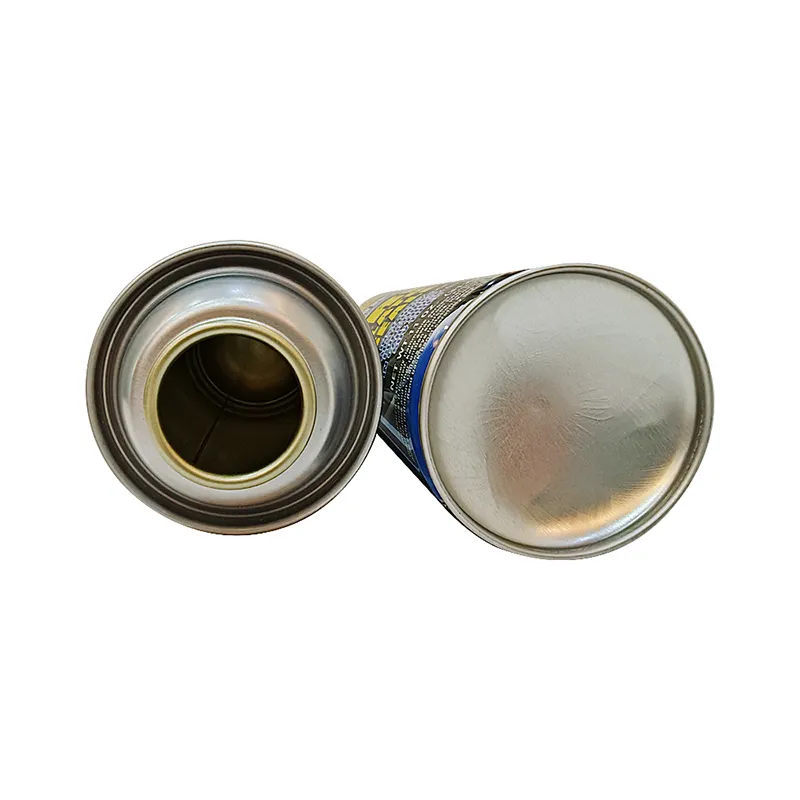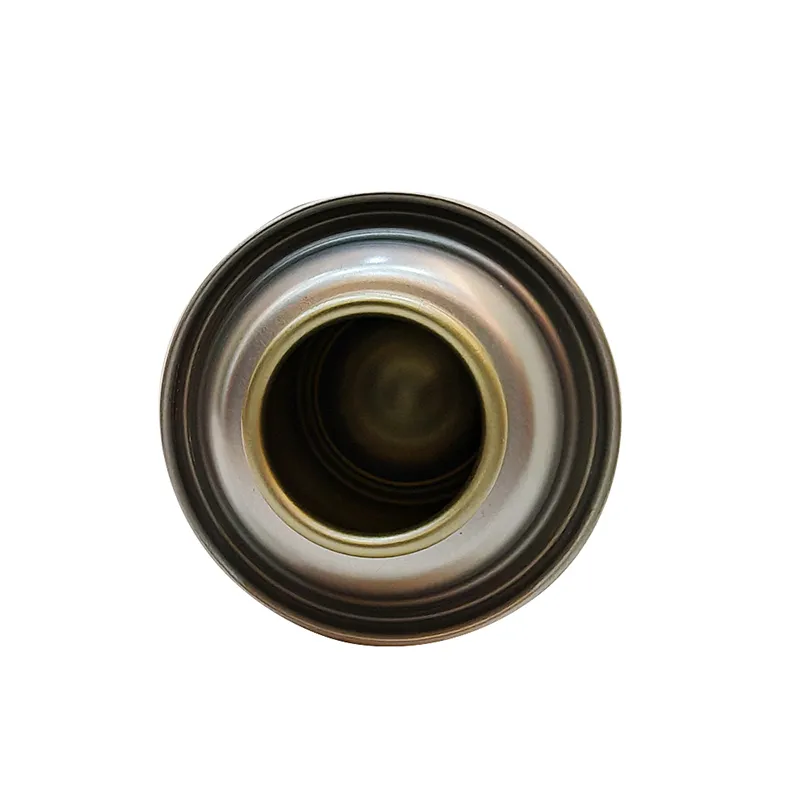Aerosol cans, commonly known as spray cans, are very common items in modern life and are widely used in the packaging of products such as cleaners, deodorants, cosmetics, pesticides, paints, etc. Its convenient spray function makes these products easy to use and store. However, although the appearance of an aerosol can looks ordinary, its interior is full of pressure. Some improper operations, such as puncturing an aerosol tin can, may bring unexpected dangers. What exactly happens if an aerosol tin can is punctured?
This issue not only involves physical and chemical phenomena, but may also pose a serious threat to personal safety. This article will explore in depth the possible consequences of puncturing an aerosol can and the principles behind it from multiple aspects.

What is the basic structure and working principle of an aerosol can?
Before discussing the dangers of puncturing an aerosol tin can, you first need to understand the structure and working principle of an aerosol can. The basic composition of an aerosol can includes four parts: the can body, the valve system, the product liquid, and the propellant.
Can body
The can body of an aerosol can is usually made of metal (such as aluminum or tinplate) and has a relatively high strength to withstand the internal pressure. Aerosol cans are designed to bear the pressure of the propellant gas and liquid inside, so the can itself has the characteristics of pressure resistance and impact resistance.
Valve system
The valve system is located at the top of the can. By pressing the valve, the liquid or gas in the can is ejected. This system is not only a key part of the product use, but also plays a role in sealing the can and maintaining internal pressure balance.
Product liquid and propellant
Aerosol cans contain two types of substances: one is the product itself, such as air fresheners, insecticides, cosmetics, etc.; the other is the propellant, which is usually a gas or liquefied gas. The main function of the propellant is to release the product from the can in the form of a spray by pressurizing it. Common propellants include flammable gases such as propane and butane, and some aerosol cans use nitrogen or compressed air as propellants.

What happens if an aerosol can is punctured?
After understanding the internal structure of an aerosol tin can, it becomes clear what will happen when an aerosol can is punctured. The physical and chemical reactions that may occur when puncturing an aerosol tin can. The puncture essentially destroys the seal of the aerosol can, causing the high-pressure substance in the can to be released into the external environment instantly. The specific consequences depend on many factors, including the gas pressure in the aerosol can, the can material, the location and method of puncture, etc.
Sudden pressure release
The inside of an aerosol tin can is usually under a high pressure state, especially when using propellant gas (such as propane, butane), the pressure in the can may reach several atmospheres. Once the aerosol tin can is punctured, the pressure in the can will be suddenly released, resulting in a violent spray phenomenon.
● Gas spray: When the can is punctured, the high-pressure gas inside will be ejected at high speed along the puncture point. This gas spray may not only produce strong noise, but also produce extremely high airflow speed locally, causing harm to people or objects around. People near the puncture point may be impacted by the gas, which may cause skin burns or punctures in severe cases.
● Liquid splash: If the aerosol tin can contains liquids, such as detergents or pesticides, these liquids will also be quickly sprayed out under the impetus of the gas. Liquids are sprayed at high speeds and spread over a wide area, which may cause damage to sensitive parts such as the skin and eyes, especially when the liquid itself is corrosive or irritating, the consequences will be more serious.
Leakage and fire risks of flammable gases
Many aerosol cans use propellants such as propane and butane, which are flammable gases. When the can is punctured, these gases are quickly released into the air. If there is an open flame, sparks or high-temperature objects near the puncture point, it is very easy to cause a deflagration or fire.
● Gas deflagration: In the air, flammable gases mix with oxygen to form an explosive gas mixture. If there is an ignition source at this time, the gas will deflagrate, producing violent flames and high temperatures, which may cause a large-scale fire.
● Flame propagation: Because the gas spreads rapidly in the form of a jet, the deflagration flame may spread rapidly to the surrounding area. The flame will not only damage surrounding objects, but also cause serious burns or other physical injuries to nearby people.
Possibility of explosion
Although the materials of most aerosol cans are carefully designed and have a certain degree of pressure resistance, under certain conditions, puncturing an aerosol tin can may cause the can to explode, especially when the can is subjected to a large impact or the puncture method is inappropriate. The causes of the explosion are mainly related to the following factors:
● Sudden drop in pressure inside the can: After the can is punctured, the pressure inside the can will drop rapidly. If the rate of drop is too fast or there is gas accumulation in the can, it may cause structural failure of the can, and then cause the can to rupture or explode.
● Temperature increase: The rapid injection and deflagration of flammable gases may generate high temperatures, causing thermal stress in the can material, and secondary explosions may occur after the can is overheated. Especially for aerosol cans used in high temperature environments, the risk of explosion after puncture is greater.

What are the direct consequences of puncturing an aerosol tin can?
Based on the above physical and chemical reactions, puncturing an aerosol tin can may bring a variety of direct consequences, which will not only endanger human safety, but also have a serious impact on the surrounding environment.
Harm to the human body
When puncturing an aerosol tin can, the human body may suffer from various forms of injury due to the spray of high-pressure gas, splashing of liquid and deflagration:
● Gas shock injury: The spray of high-pressure gas will have a direct impact on the human body. The hands, face and other parts near the puncture point may be injured due to the high-speed impact of the gas, especially when the puncture tool is not held firmly, it is easy to cause cuts on the hands of the punctured person.
● Liquid burns or poisoning: The liquid in the aerosol tin can usually has a certain chemical activity, such as detergents, pesticides, etc. containing corrosive or toxic substances. Once the liquid is sprayed out, the skin and eyes contact these chemicals, which may cause burns, allergic reactions or poisoning. Especially pesticides and chemical cleaners, long-term exposure to the air is harmful to the human body.
● Burns caused by deflagration: If the propellant in the can is a flammable gas, it will cause deflagration when punctured, and the punctured person and surrounding people may suffer serious burns. The flame spreads quickly and is accompanied by high temperature. The skin directly in contact with the flame will become red, swollen, blistered, or even deeply burned.
Impact on the environment
Punched aerosol cans are not only harmful to the human body, but may also have a negative impact on the surrounding environment:
● Air pollution: Once the propellant or liquid in the aerosol can is released into the air, especially spray products containing chemical ingredients, it will affect the surrounding air quality. These chemicals may contain volatile organic compounds (VOCs), which may cause air pollution and even damage the respiratory system when released into the air.
● Increased risk of fire: If gas or liquid leaks during puncture and encounters a fire source, it may cause a fire, which will not only damage buildings and objects, but also further endanger people's life and property safety.
● Water pollution: If the liquid from the punctured aerosol tin can flows into the water body, it may pollute the surrounding water sources. Some chemicals in aerosol cans are highly toxic or difficult to biodegrade. Once they enter the water body, they will cause long-term harm to aquatic organisms and ecosystems.
How to prevent the dangers caused by punctured aerosol cans?
Although punctured aerosol cans may bring many dangers, potential risks can be effectively avoided through proper handling and preventive measures.
Proper disposal of aerosol cans
Used aerosol cans should be disposed of in accordance with local garbage classification or hazardous waste disposal regulations. Never puncture or forcefully compress an unused aerosol can, as the residual gas or liquid may cause excessive pressure and create a dangerous situation.
Avoid contact with fire
Aerosol cans usually contain flammable propellants. Especially during the puncture process, they must be kept away from any fire source, sparks or hot objects to prevent explosions or fires caused by gas leaks.
Safe storage of aerosol cans
Aerosol cans should be stored in a cool, dry place, away from exposure to high temperatures or direct sunlight to prevent the internal pressure from increasing and causing the can to deform or burst.

